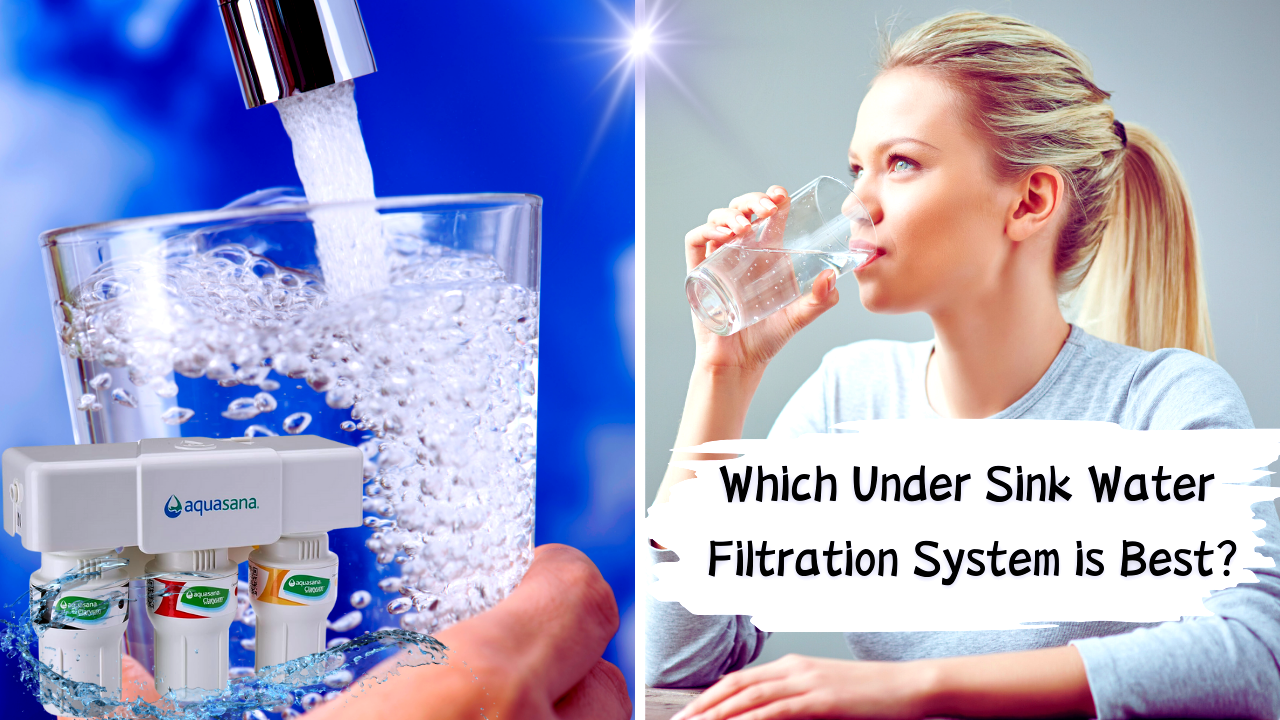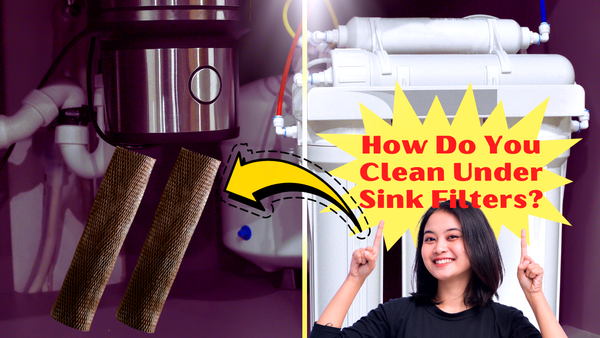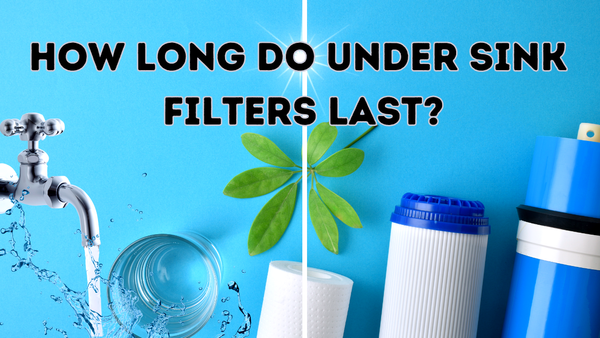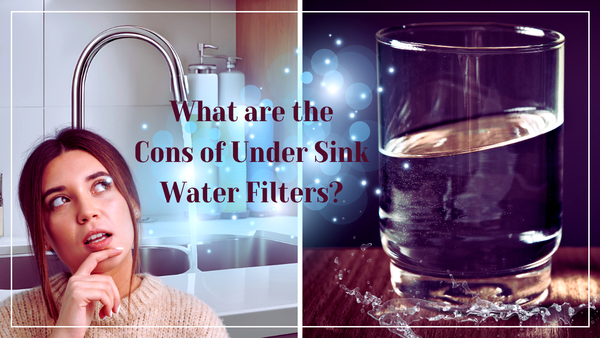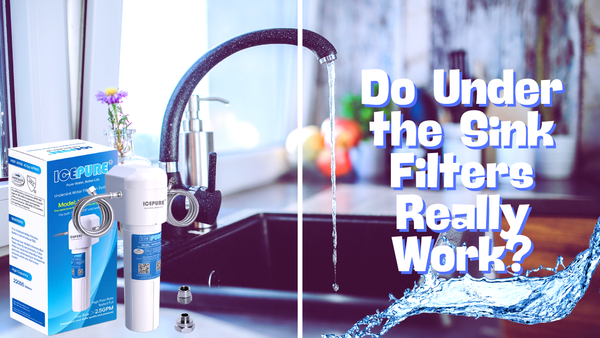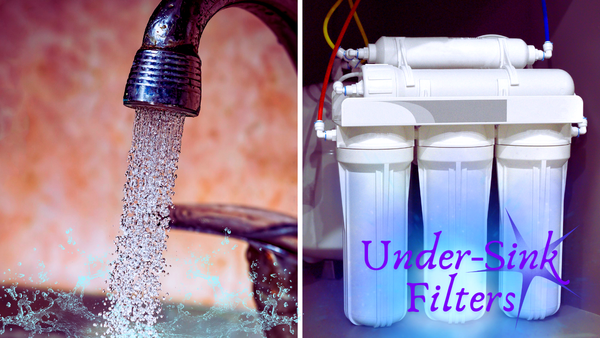Key Takeaways:
- Understanding Different Filtration Methods: Learn about various under-sink water filtration systems, including reverse osmosis, activated carbon, and catalytic carbon filters.
- Factors to Consider: Discover the key factors to consider when choosing the best under-sink water filter, such as water quality, filter lifespan, and ease of installation.
- Top Recommendations: Learn about some of the best under-sink water filtration systems available on the market today.
Choosing the best under-sink water filtration system can feel like finding a needle in a haystack. With so many options available, it's easy to get overwhelmed. But don't worry—we've got your back. This article will guide you through the maze of under-sink water filters, helping you make an informed decision for your home.
Why Choose an Under-Sink Water Filtration System?
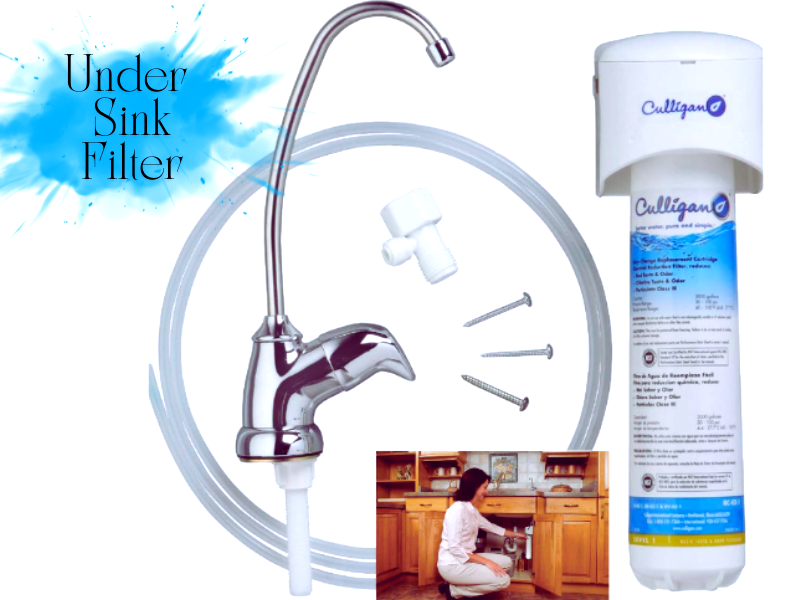
Under-sink water filters are a popular choice for many households. They offer a convenient way to ensure that tap water is clean and safe to drink. Unlike countertop filters, under-sink systems are hidden away, saving valuable counter space. They often provide better filtration capabilities, removing more contaminants from your water.
Types of Under-Sink Water Filtration Systems
Reverse Osmosis Systems
Reverse osmosis systems are known for removing a wide range of contaminants. These systems use a semi-permeable membrane to filter out impurities, including heavy metals, volatile organic compounds, and some emerging contaminants. The result is great-tasting water that's safe to drink.
Activated Carbon Filters
Activated carbon filters are another popular choice. These filters use activated carbon to remove contaminants from your water. They are particularly effective at removing chlorine, which can improve the taste and smell of your water. Additionally, activated carbon filters can remove some harmful chemicals and volatile organic compounds.
Catalytic Carbon Filters
Catalytic carbon filters are a step up from activated carbon filters. They are designed to remove a broader range of contaminants, including chloramines and other harmful chemicals. These filters are often used in combination with other filtration methods to provide comprehensive water purification.
Key Factors to Consider
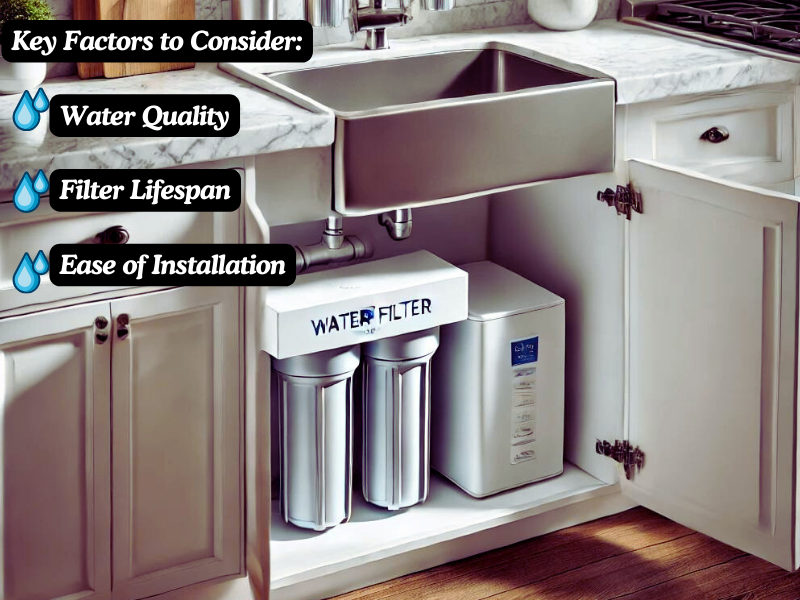
Water Quality
The quality of your tap water is a crucial factor to consider when choosing an under-sink water filtration system. If your water contains high contaminants, you may need a more advanced filtration system, such as reverse osmosis. On the other hand, if your water is relatively clean, a simple activated carbon filter may suffice.
Filter Lifespan
Another important consideration is the lifespan of the filter. Some filters need to be replaced more frequently than others. For example, reverse osmosis systems typically require filter replacement every 6 to 12 months, while activated carbon filters may last up to a year. Check the manufacturer's recommendations for filter replacement to ensure optimal performance.
Ease of Installation
Another factor to consider is the ease of installation. Some under-sink water filters are easier to install than others. Look for systems that come with quick-connect fittings and clear instructions. If you're uncomfortable installing the system, you may want to consider professional installation.
Top Under Sink Water Filtration Systems
APEC Water Systems ROES-50
The APEC Water Systems ROES-50 is a top-rated reverse osmosis system. It features a five-stage filtration process that removes up to 99% of contaminants, including heavy metals, chlorine, and volatile organic compounds. The system is easy to install and has a dedicated faucet for convenient access to filtered water.
iSpring RCC7
The iSpring RCC7 is another excellent reverse osmosis system. It features a six-stage filtration process that removes most contaminants from your water. The system includes a pre-filter to extend the life of the main filter, and it comes with a brushed nickel faucet for a sleek, modern look.
CuZn UC-200
The CuZn UC-200 is a popular choice for those looking for an activated carbon filter. This system is designed to remove chlorine, lead, and other harmful contaminants from your water. It has a long filter lifespan of up to five years and is easy to install under your sink.
Benefits of Under-Sink Water Filtration Systems
Under-sink water filtration systems provide notable benefits, such as significantly improving water quality by effectively removing contaminants and ensuring that your tap water is clean and tastes great. These systems are designed to be installed under your kitchen sink, which helps save valuable counter space and keeps your kitchen looking tidy. Many come with a dedicated faucet for easy access to filtered water. While the initial cost may be higher than other types of filters, they are cost-effective over time due to their longer-lasting filters, which reduce the frequency of replacements and help save money on bottled water.
Installation Tips
Before installing your under-sink water filter, gather all the necessary tools, such as a wrench, screwdriver, and plumber's tape, to ensure the process goes smoothly. Carefully follow the manufacturer's instructions, as each system may have specific requirements, and contact the manufacturer for help if you're uncertain about any steps. Once installed, turn on the water supply and check all connections for leaks. If you find any, tighten the fittings and test again to ensure a proper seal. This will help prevent potential water damage and ensure your system functions correctly.
Maintenance Tips
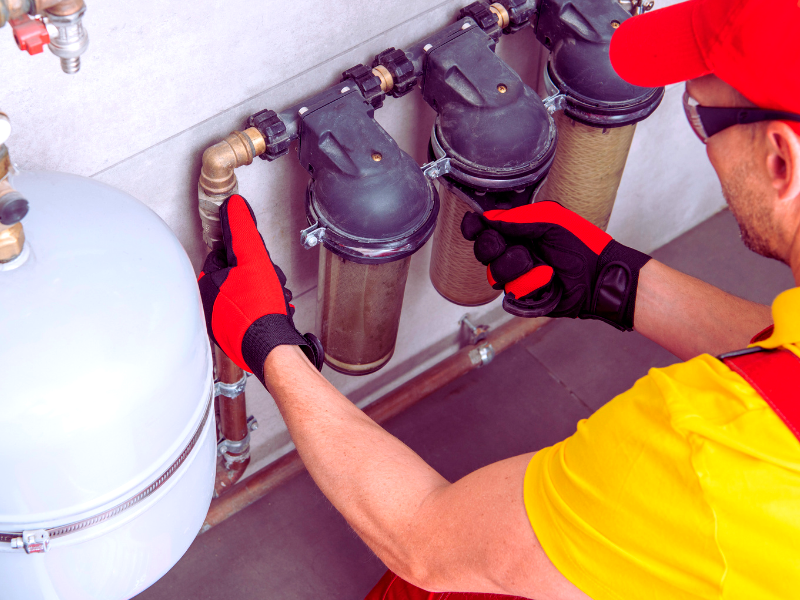
To keep your under-sink water filter working well, it's important to regularly replace the filters according to the manufacturer's instructions. This ensures your water stays clean and safe to drink. Besides replacing the filters, you should also clean the system, including the faucet and other parts, to prevent buildup and extend its life. Regularly check the quality of your water, and if you notice any changes in taste, smell, or appearance, it might be time for a filter replacement or system cleaning. Keeping an eye on these factors will help you catch any problems early and make sure your water filter continues to provide great-tasting, clean water.
Understanding Filter Lifespan and Replacement
When considering which under-sink water filtration system is best, understanding the lifespan of your filters is crucial. Different under-sink water filters have varying lifespans, often influenced by the type of filter and the quality of your tap water. For instance, activated carbon filters typically need replacement every six months, while reverse osmosis systems might last up to two years. Regularly checking your filter's lifespan ensures optimal water quality and avoids the risk of harmful contaminants slipping through.
Moreover, timely filter replacement is essential for maintaining the efficiency of your under-sink water filtration system. Neglecting this can lead to reduced flow rate and compromised filtration performance. Many modern under-sink filters come with indicators or alerts to remind you when it's time for a change. By adhering to these guidelines, you can ensure your drinking water remains clean and safe, providing peace of mind and better-tasting water for your household.
The Role of Emerging Contaminants in Water Filtration
Emerging contaminants are a growing concern in water filtration. These include substances like pharmaceuticals, personal care products, and forever chemicals that traditional filters might not effectively remove. When choosing an under-sink water filter, it’s important to consider independently tested systems for removing these emerging contaminants. Reverse osmosis systems and catalytic carbon filters are particularly effective in addressing these issues, ensuring tap water is free from a wide range of pollutants.
Emerging contaminants can affect water taste and pose health risks. For instance, volatile organic compounds and heavy metals can seep into your water supply, making it crucial to have a robust filtration system. Under-sink filters designed to tackle these contaminants provide better-tasting water and peace of mind. By investing in a high-quality under-sink water filtration system, you ensure that your drinking water is not only safe but also free from the latest threats to water quality.
The Role of Pre-Filters in Under-Sink Water Filtration Systems
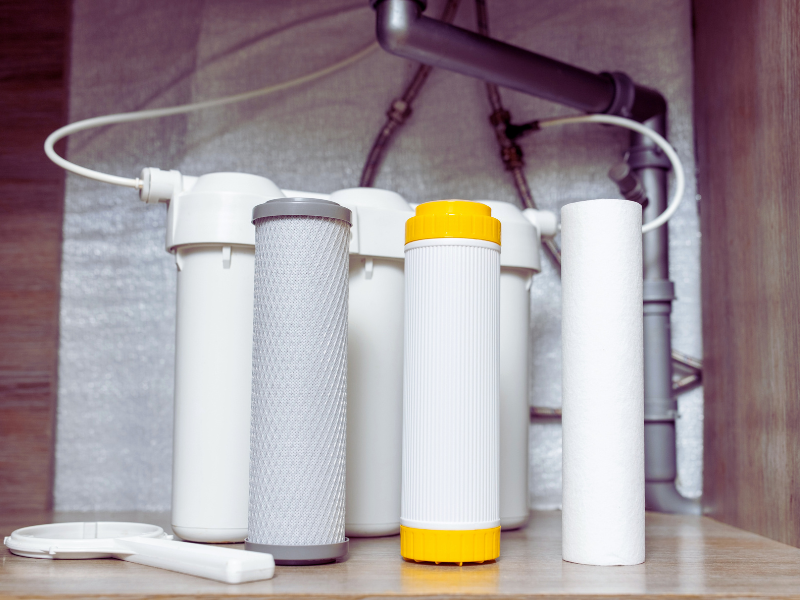
Pre-filters play a pivotal role in enhancing the efficiency of your under-sink water filtration system. These initial filters capture larger particles and sediments before the water reaches the main filtration unit. By doing so, pre-filters protect the more delicate components of your under-sink water filter, extending their lifespan and ensuring they can effectively remove contaminants like volatile organic compounds and heavy metals.
Incorporating a pre-filter into your under-sink filtration system can also improve water pressure and flow rate. When larger particles are filtered out early, the main filters don't have to work as hard, resulting in a more consistent and robust flow of filtered water. This enhances the overall performance of your sink water filter and contributes to a more efficient and cost-effective filtration process. Regular maintenance and timely replacement of pre-filters are key to maintaining the optimal function of your under-sink water filtration system.
Choosing the Right Filter for Your Needs
When choosing the right under-sink water filter, start by assessing your water quality. You can do this by getting a water quality report from your local supplier or using a home testing kit to find out what contaminants are present. Next, think about your budget—while advanced filters like reverse osmosis systems might cost more upfront, they offer thorough filtration. Simpler options, such as activated carbon filters, are often more affordable and still effective for certain issues. Also, consider how easy the filter is to install and maintain. If you’re uncomfortable with DIY projects, look for systems that offer professional installation. Lastly, check how often you need to replace the filter and how easy it is to get replacement parts.
Benefits of Reverse Osmosis Systems
RO systems are great for homes with insufficient water. They filter everything and remove heavy metals and volatile organic compounds, making your water cleaner and safer. Plus, RO systems remove chlorine and other contaminants from your water, so you can taste and smell the difference when you drink and cook with tap water.
Benefits of Activated Carbon Filters
Carbon filters are great for removing chlorine from your water. This improves your water's taste and smell, so drinking it is more enjoyable. They can also remove some bad chemicals and volatile organic compounds. One of the big benefits is long filter life; these filters can last up to a year, so you don’t have to replace them often. That means you save time and money in the long run, and they are a convenient way to have clean, tasty water.
Benefits of Catalytic Carbon Filters
Catalytic carbon filters are great for water quality. They are good at removing chloramines, which are hard to remove because they are a mix of chlorine and ammonia used to clean water. These filters can handle this and are perfect for homes with chloramine-treated water. Besides removing chloramines, catalytic carbon filters also remove contaminants like bad chemicals and volatile organic compounds. They are a versatile and effective way to get cleaner, better-tasting water in your home.
Installation Process for Under-Sink Water Filters
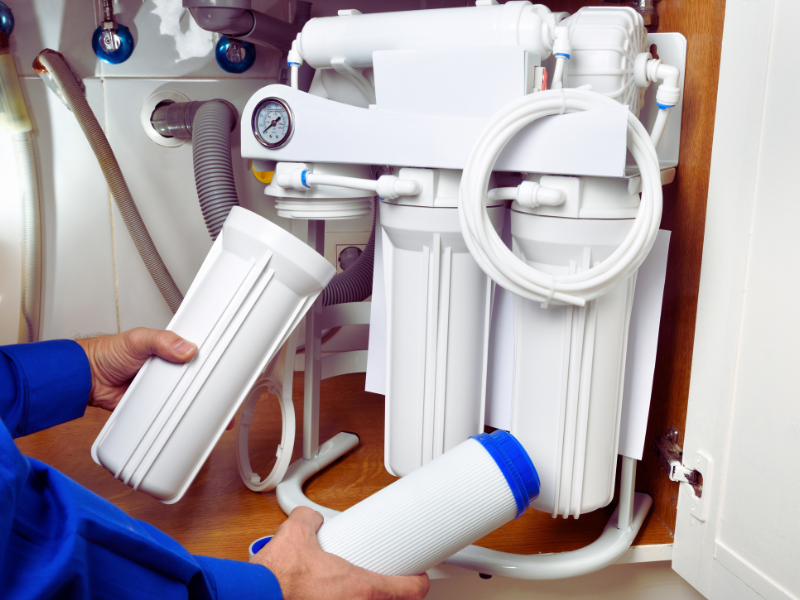
To start installing your under-sink filter, turn off the water supply by finding and turning off the valve under your sink to stop the water flow. Then, follow the manufacturer’s instructions to install the filter system, which usually involves attaching the filter to the cold water line and installing a new faucet for filtered water. Make sure to use the plumber’s tape on all threaded connections to prevent leaks and ensure everything is snug.
Summary
When choosing an under-sink water filtration system you need to consider water quality, filter life, and ease of installation. RO systems, carbon filters, and catalytic carbon filters all have their benefits and can remove contaminants from tap water. Now you know what you need and what you like you can choose the right under-sink water filter for your home. Stay connected with us by subscribing to our newsletter today!
FAQ
How often should I replace the filters in my under-sink water filter?
Filter replacement frequency depends on the filter type and the manufacturer’s recommendations. RO systems need filter replacement every 6-12 months and activated carbon filters for up to 1 year. Follow the manufacturer’s instructions for optimal performance.
Can I install an under-sink water filter myself, or do I need a pro?
Many under-sink water filters are designed for easy DIY installation with clear instructions and quick-connect fittings. But if you’re not comfortable with the installation process you may want to consider professional installation to ensure the system is installed correctly and has no issues.
What contaminants can an under-sink water filter remove?
Under the sink, water filters can remove chlorine, lead, volatile organic compounds (VOCs), heavy metals, and harmful chemicals. The contaminants removed depend on the filter type. RO systems, activated carbon filters, and catalytic carbon filters each have their strengths.
